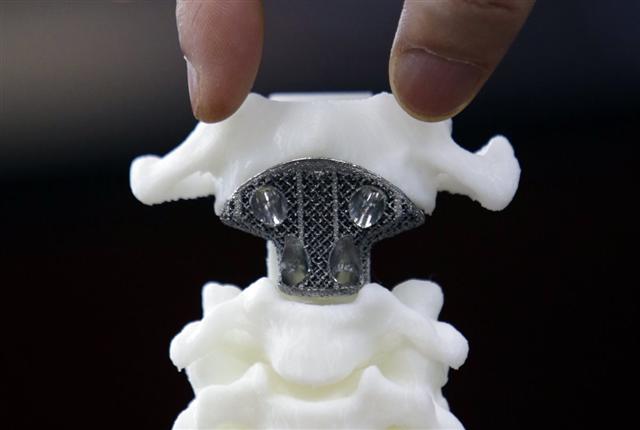By now, it’s clear that 3D printing doesn’t resume to toys and the such. Food, buildings, and as of late body parts are making their way into our lives using a method that would’ve been considered inconceivable a few years ago.
After 3D printed blood vessels and ears, biotech companies expressed their interest in 3D printing livers and other organs. There’s no doubt that they’re closer to a viable product and that they’re progressing with each passing day, but until the 3D printed liver becomes a reality, today’s news is one of the most important things for the future of medical tech.
Qin Minglin, a 12-year old Chinese boy suffering from bone cancer went through a surgical procedure that involved the implant of a 3D printed vertebra into his spine. The 5-hour surgery took place at the Peking University Hospital and implied the removal of a tumor from the spine and the replacement of the affected vertebra with the 3D printed one.

Dr. Liu Zhongjun, the surgeon behind this project and director of the orthopedics department at Peking University, pointed out that “This is the first use of a 3D printed vertebra as an implant for orthopedic spine surgery in the world.”
He proceeded to explain in an interview with Reuters how the 3D printed vertebra gets to fit perfectly in the patient’s bone structure: “We can use iconographic tests on patients such as a computed [tomography], or CT scans, and convert the CT data into 3D-printing data in order to produce an internal fixation with exactly the same structure as the patient’s bone structure. When it is implanted into a human being, it perfectly matches the patient’s own anatomical structure.”
While consumer 3D printers rely on polymers to produce various objects, such a material was out of discussion in the case of the 3D printed vertebra. As a result, it was created using titanium powder, a material that’s widely used in orthopedics because of its biocompatibility, light weight and strength.
“Using existing technology, the patient’s head needs to be framed with pins after surgery,” said Dr. Zhongjun, explaining that this 3D printed vertebra will reduce the recovery time. “But with 3D-printing technology, we can simulate the shape of the vertebra, which is much stronger and more convenient than traditional methods.”
Be social! Follow Walyou on Facebook and Twitter, and read more related stories about Disney Research’s method of 3D printing human hair accurately, and the Mcor Isis that uses layers of paper to bring color to 3D printing.










